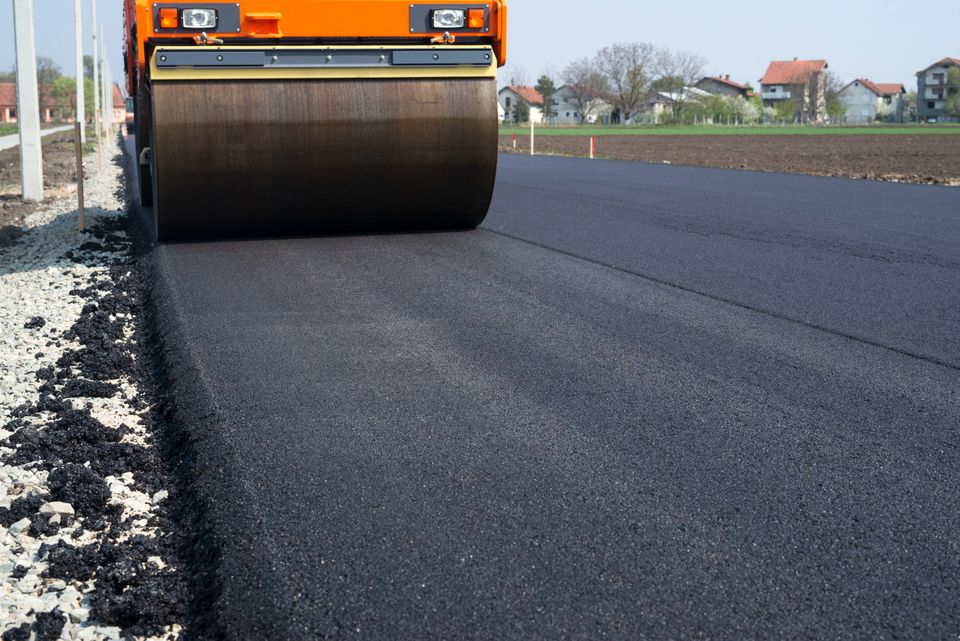Asphalt pulverizing is an effective way to breathe new life into old, worn-out roads. This process involves grinding up the existing asphalt and mixing it with the underlying materials. The result is a new, stable base that can be repaved with fresh asphalt. Asphalt pulverizing is a cost-effective and eco-friendly way to rebuild roads without starting from scratch. Discover how this innovative technique can make old roads new again by exploring its benefits, the process, and essential tips for successful projects.
What Is Asphalt Pulverizing?Asphalt pulverizing is a method used to recycle old asphalt roads. The process involves grinding up the old asphalt surface and mixing it with the underlying materials to form a new and stable base. This base can then be repaved with fresh asphalt, creating a renewed road without the need to completely remove the old one.
We start by using specialized machinery to break apart the old asphalt. This machinery grinds the asphalt into small pieces, which are then blended with the existing base material. The mixture is spread evenly across the intended area, creating a new foundation ready for repaving. This new foundation is not only strong but also provides a smooth surface for the new layer of asphalt.
Using asphalt pulverizing helps recycle and reuse existing road materials. It minimizes waste and reduces the need for additional resources. This method is especially useful in projects where both cost efficiency and environmental impact are important.
Benefits of Asphalt PulverizingAsphalt pulverizing offers several significant benefits for road construction and rehabilitation projects. Here are some of the key advantages:
1. Cost-Effective: Asphalt pulverizing reduces project costs. By recycling the existing asphalt, you save on the expenses of purchasing and transporting new materials. This results in significant savings, especially for large-scale projects.
2. Time-Saving: The process of pulverizing old asphalt and repaving is much quicker than fully removing and replacing the road. This minimizes disruption and allows for faster completion. This is especially important in areas with heavy traffic.
3. Eco-Friendly: Reusing old asphalt minimizes waste and reduces the environmental impact. It cuts down on the need for new raw materials and lowers the carbon footprint associated with transporting these materials.
4. Improved Road Stability: The new base created by pulverizing old asphalt is strong and stable. This helps to prevent common road issues like cracks and potholes. The durable foundation leads to a longer-lasting road surface.
5. Adaptability: Asphalt pulverizing is versatile and can be adapted to various project needs. Whether it’s a small parking lot or a busy highway, this method can be fine-tuned to suit different conditions and requirements.
The Asphalt Pulverizing ProcessUnderstanding the asphalt pulverizing process can help you appreciate how old roads are transformed into new, durable surfaces. The process involves several key steps:
1. Preparation: The first step is preparing the existing road. This involves cleaning the area and removing any debris or obstacles that might interfere with the pulverizing equipment. Proper preparation ensures a smooth and efficient operation.
2. Grinding the Asphalt: Specialized machinery is used to grind up the existing asphalt layer. This process breaks the asphalt into small pieces, which can then be mixed with the underlying materials. The machinery is designed to handle large areas quickly and efficiently.
3. Mixing and Compacting: After grinding, the crushed asphalt is mixed with the underlying base materials. This mixture is then spread evenly across the road surface. Compaction equipment is used to press and pack the material tightly, creating a solid and stable base.
4. Final Touches: Once the new base is compacted, it is ready for a fresh layer of asphalt. This new layer is applied over the compacted base, creating a smooth and durable road surface. The final step involves allowing the new asphalt to be cured properly before opening the road to traffic.
Tips for Successful Asphalt Pulverizing ProjectsTo ensure successful asphalt pulverizing, keep these tips in mind:
1. Proper Assessment: Before starting any project, assess the condition of the existing road. Determine if asphalt pulverizing is the best solution or if other methods might be more appropriate. Understanding the road's condition helps plan the project better.
2. Choose the Right Equipment: Using the right machinery is crucial for a successful project. Make sure that the equipment is suitable for the specific task and that it is well-maintained. Properly functioning equipment speeds up the process and ensures quality results.
3. Monitor the Process: Keep an eye on the entire process from start to finish. Regular checks help identify and address any issues promptly. Ensuring each step is completed correctly makes the final result much more reliable.
4. Manage Moisture Levels: Proper soil moisture is essential for effective asphalt pulverizing. Too much or too little moisture can affect the stability of the new base. Make adjustments as needed to maintain the ideal moisture level.
5. Allow for Curing: After applying the new layer of asphalt, allow adequate curing time. Rushing this step can compromise the durability of the road. Make sure the new surface is properly set before opening it up for use.
ConclusionAsphalt pulverizing offers a smart and eco-friendly solution for revitalizing old roads. By grinding and mixing existing materials, you can create a strong, stable base ready for a new layer of asphalt. This method saves time, money, and resources while delivering a durable and long-lasting road surface.
For high-quality
soil stabilization and asphalt pulverization services in Chattanooga, TN, Terra-Firma Stabilization & Reclamation is here to help. Contact us today to learn how we can make your old roads new again.

